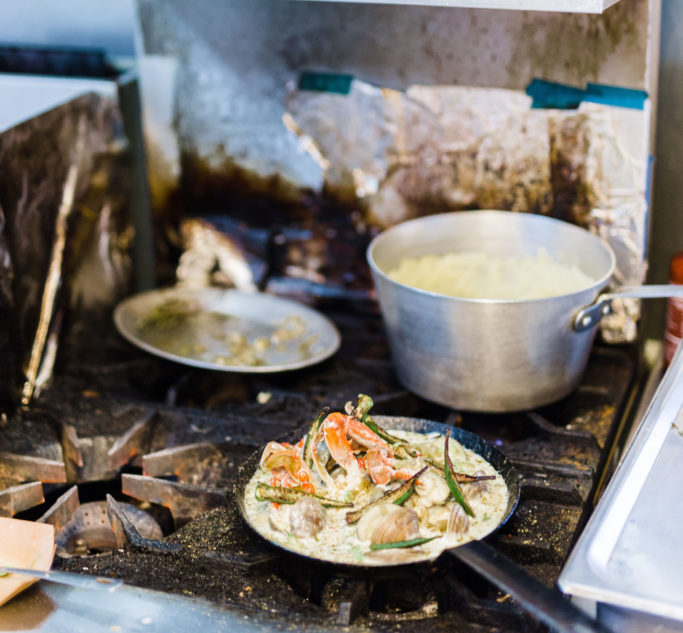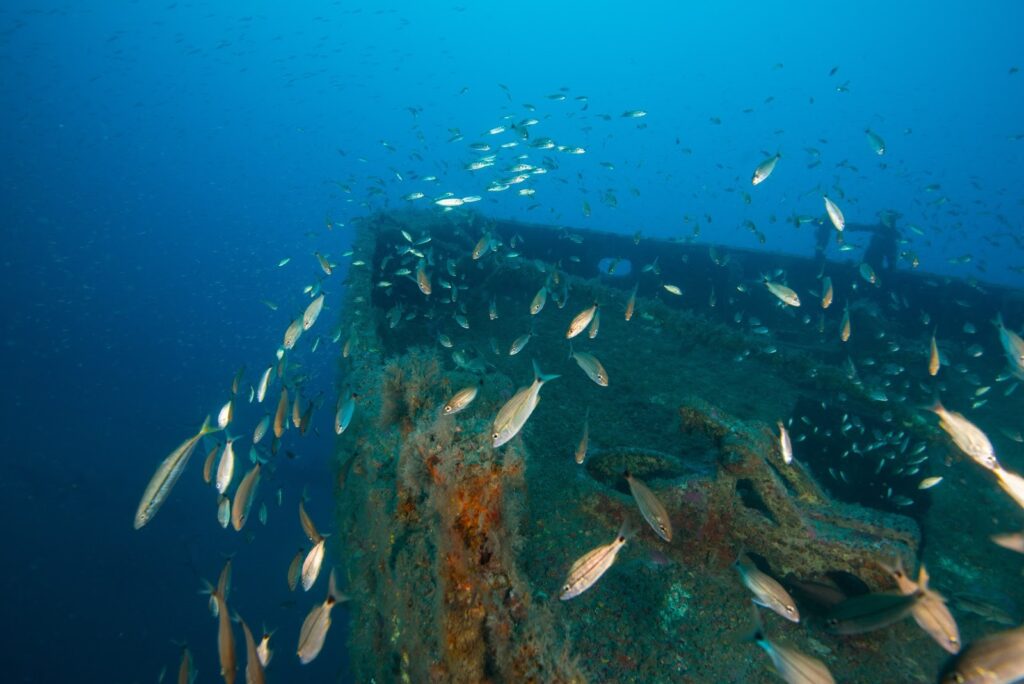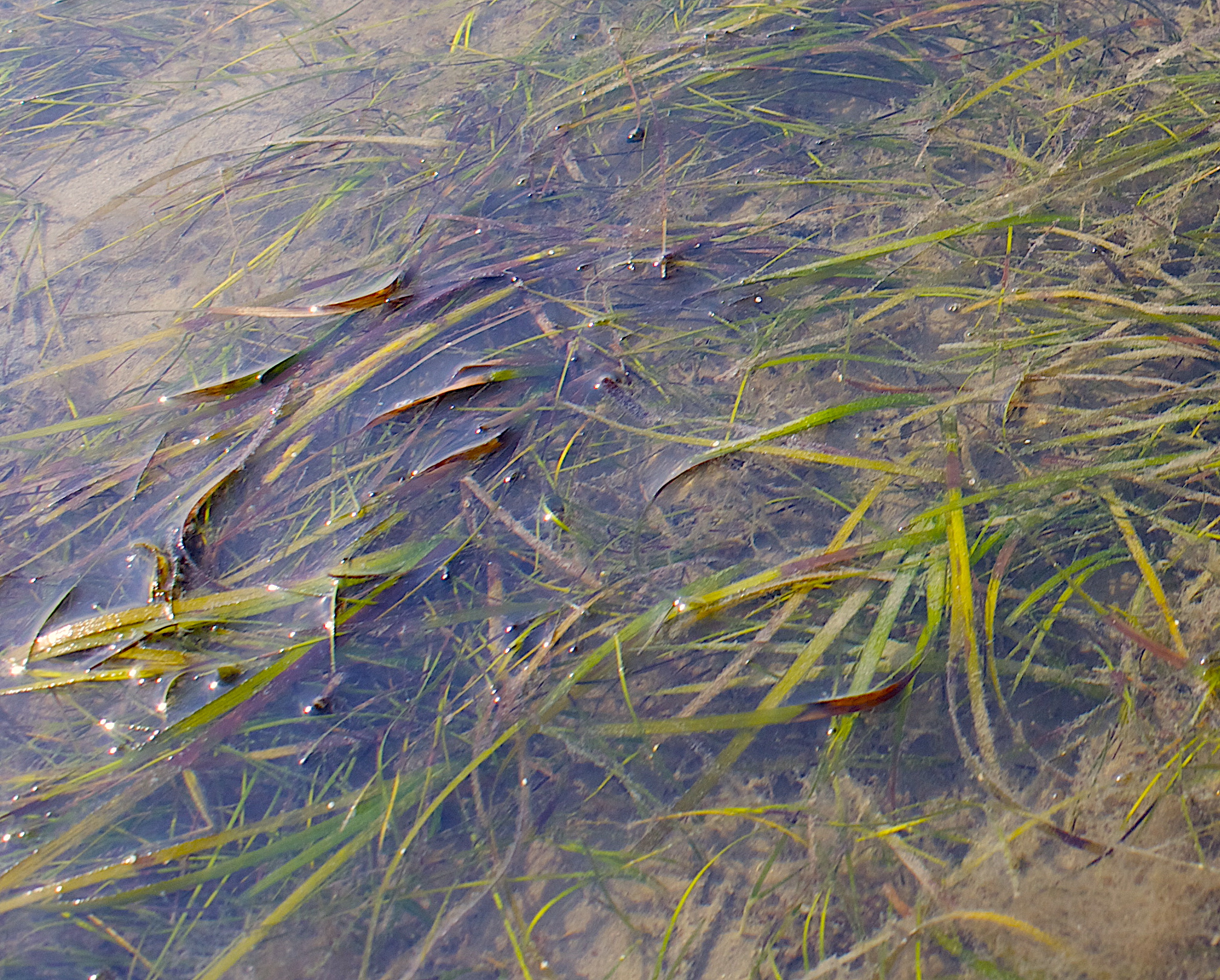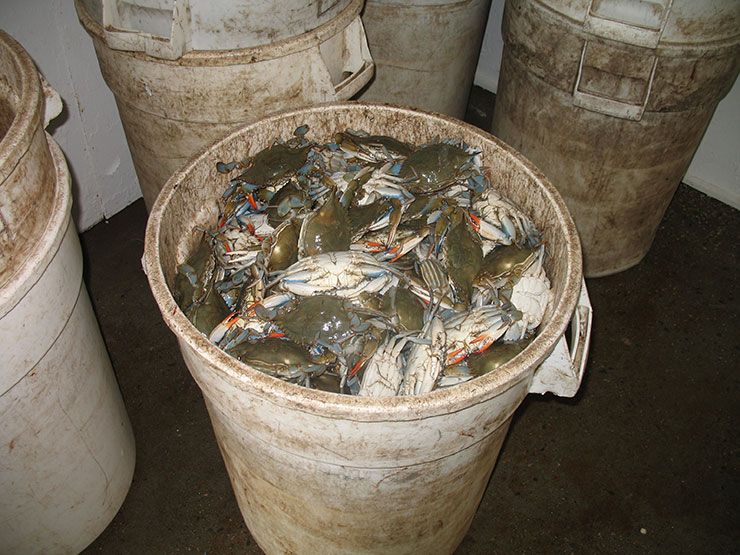Local seafood interest — including recognition of local branding logos — continues to gain focus among consumers.
A visual cue is the standing-room only crowds at the Cooking with the Chefs program at the 2010 N.C. Seafood Festival in Morehead City. And North Carolina Sea Grant researchers at the University of North Carolina at Greensboro report their survey of festival-goers supports a public interest in seafood beyond meeting coastal chefs.
Most of the 299 survey respondents are putting their money where their mouths are. If given an opportunity to purchase a $22 local seafood entree or a $15 imported seafood entree, 84 percent say they would select the local seafood.
“To follow up this question we asked their reasoning for seeking out local seafood,” notes lead researcher Susan Andreatta, who had done similar festival surveys in 2007 and 2008.
The most common answers:
1. Freshness, taste and quality of the local vanety.
2. To support the local businesses, including the local fishermen and local economy.
3. For safety, because the country of origin is the United States.
Or, as one participant responding to a follow-up question explains: “We’re all about supporting local fishermen.”

Another comment: “Wish we could see more local fish in restaurants. We’d pay for it.” Andreatta recalls that a young woman shared plans to start her own catering company. She is very excited about working with local fishermen and supporting a local economy as part of her own business. Others already in the food business agree.
Overall, more than a third of the respondents report that in the past year they have started seeking out North Carolina seafood regularly, including checking for country-of-origin labeling in markets.
“When asked if a branding logo would be helpful in identifying local seafood products, 78.6 percent thought this to be a good idea,” Andreatta reports.
Of the four North Carolina seafood-branding efforts, the inaugural program — Carteret Catch, which unveiled its logo in 2005 — had the highest recognition among the survey participants. All four programs — including Brunswick Catch, Ocracoke Fresh and the Outer Banks Catch — offered cooking demonstrations in the tent.
Some survey participants came from afar: Germany, Nevada, Florida, New York and Tennessee.
But most hail from North Carolina, with 52 different counties represented. Carteret County — home to the Seafood Festival — was the leader, followed by nearby Onslow and Craven counties.
SHRIMP LEADS
The Chefs Tent crowd followed national trends with a focus on shrimp — which is identified by the National Fisheries Institute as America’s most popular seafood.
“Not surprisingly, shrimp came out three times as popular as crab, scallops, oysters and flounder, which were nearly equal for second place. Each of these five items is locally harvested, which illustrates great support for local seafood,” Andreatta explains.
But the participants noted a range of nearly four-dozen species. Local favorites include spot, mullet, grouper, snapper, wahoo and triggerfish. Others cited cold-water species, such as halibut, wild salmon, lobster and crab legs, likely from king crabs.
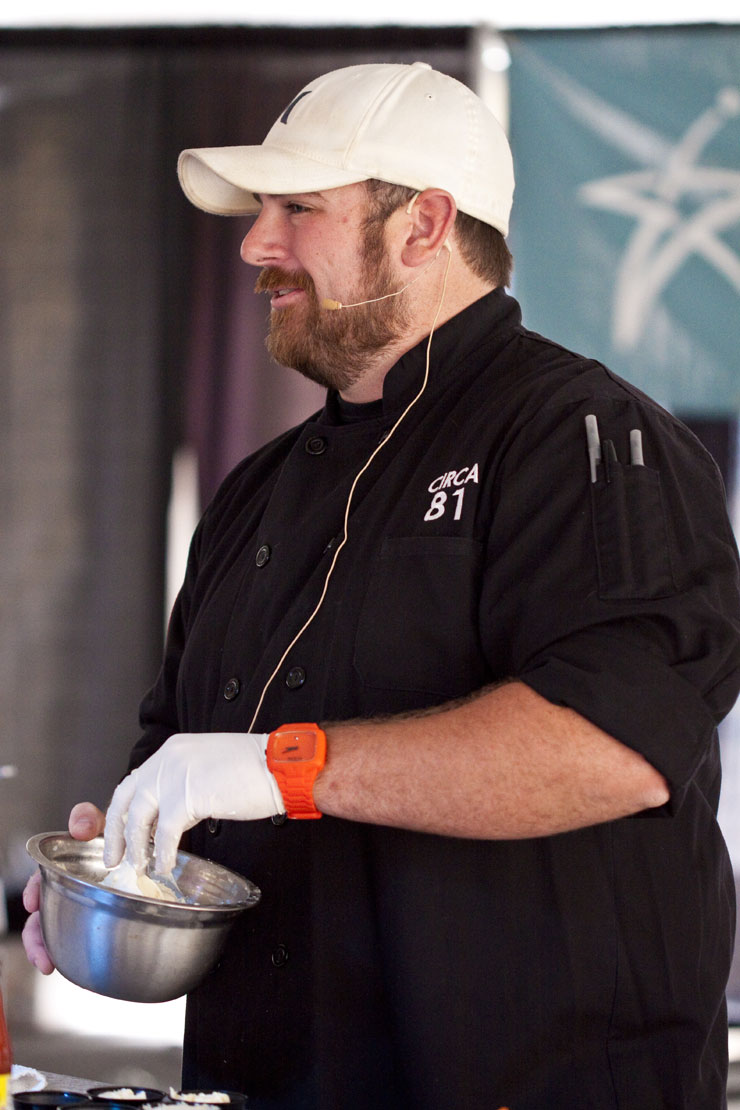
“There were some non-picky seafood eaters who said they enjoyed everything or just fish,” Andreatta reports. “Even when we pressed them for a finfish or shellfish item, they said they liked to eat ‘any fish going,’ especially on the day they wanted to eat it.”
Barry Nash, North Carolina Sea Grant’s seafood specialist, notes that seasonality is a key factor in choosing local seafood, as well as other local foods.
“People are looking for ways to identify who is selling local seafood and when it is seasonally available,” Nash explains.
Many — 88 percent — thought the North Carolina Seafood Availability charts they received at the event would help them learn to eat seafood in season. And 86.6 percent thought the Quality Counts posters would help them discern the quality of seafood they purchase.
The chart and poster are among the consumer education products developed by North Carolina Sea Grant in partnership with the N.C. Division of Marine Fisheries, the N.C. Aquariums and the Seafood Marketing program of the N.C. Department of Agriculture and Consumer Services.
With the survey taken in the chefs’ demonstration tent, there was plenty of interest in cooking seafood at home.
“Overwhelmingly, shrimp is the preferred item to cook at home too. Once again, there was a long list of 37 different items the participants enjoyed cooking, ranging from grouper to canned tuna,” Andreatta says.
Those who chose not to cook at home cited the smell, their knowledge and skills, or simply that they prefer seafood in a restaurant.
“Shrimp, scallops or oysters were tied for the first choice when asked what seafood was their favorite when ordering,” Andreatta adds, noting that flounder and a range of finfish are second choices.
“We probed, wanting to know from the participants, when eating at a coastal area restaurant, how did they know the seafood they were eating was local,” Andreatta continues. Just over a third said that they ask if seafood is local, with about a quarter looking for advertising and other signs. Only about 10 percent assume that local restaurants would serve local seafood.
FUTURE CHOICES
What is ahead for aficionados of North Carolina seafood?
The Community Supported Fisheries (CSF) model — originally described by Andreatta in an earlier N.C. Fishery Resource Grant project in partnership with Carteret Catch — continues to gain interest in the state. And more than 20 have been organized across the nation. Similar to Community Supported Agriculture programs, CSF customers buy shares in advance for a season, then meet at a particular spot for weekly or otherwise scheduled deliveries of fresh fish and shellfish.
In January 2011, the Walking Fish program — started by Duke University students and profiled in a Coastwatch story last year — transferred its operation to a “fishermen’s cooperative.” Shares again sold out quickly for the deliveries to Durham in the winter season.
“The cooperative,” explains Bill Rice, “Is not just about fishermen. This will benefit anyone who eats seafood and cares about coastal communities. This is a way to ensure that consumers have access to local seafood at a price that is fair to everyone involved.” Owner of Fishtowne in Beaufort, Rice is on the boards of the cooperative and Carteret Catch.
Other CSF programs in North Carolina include Core Sound Seafood, which delivers to Chapel Hill, Carrboro and Raleigh. The growth of the CSF concept is reflected in the survey results as well.
“We learned from this interview that 67 percent of the participants are interested in a CSF, which is up from 20 percent when we asked a similar question in 2007,” notes Andreatta, who will present the 2010 survey results at The Society for Applied Anthropology Conference in March in Seattle, along with UNCG graduate student Nicole Latora and undergraduates Mary Beth Morton and Sarah Welch.
Of the 220 respondents for that question, 39 percent would be interested if the seafood could be available closer to their “home” address; 9 percent wanted it available while on the coast; and 25 percent wanted a seafood share available at both locations.
“If people continue to incorporate the use of local branding logos in their decision-making process for where they purchase their seafood at retail places or at restaurants, then the social marketing activities of North Carolina Sea Grant and volunteers of Carteret Catch, Brunswick Catch, Ocracoke Fresh and the Outer Banks Catch will have proven to be successful in terms of modifying the seafood-eating public’s behavior for the long term,” Andreatta concludes.
For North Carolina seafood availability and quality products, and for links to Local Catch programs, go to www.ncseagrant.org/seafood.
To find recipes and more information on North Carolina seafood, go to: marinersmenu.org.
This article was published in the Winter 2011 issue of Coastwatch.
For contact information and reprint requests, visit ncseagrant.ncsu.edu/coastwatch/contact/.
- Categories:
